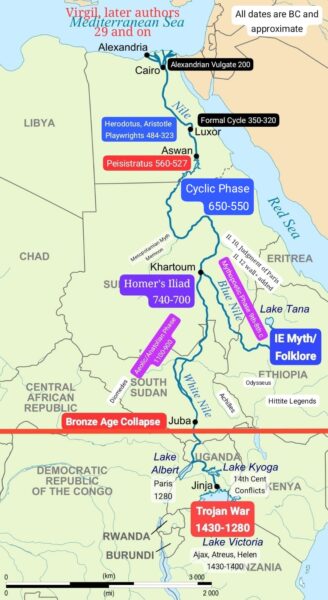In this final part of my proposed roadmap to the evolution of the Trojan War legend, I discuss the Cyclic phase, which occurred from about the mid-7th century to the mid-6th century, amalgamating Homer’s Iliad with the Mythopoetic poems into one tradition. Thereafter, the stories of the Trojan War became assembled into “cycle,” first in Athens under Peisistratus or his son, between 560 and 527, and finally, in a formal sense, during Aristotle’s day, around 350-320. This post-Cyclic period (roughly 520-300) saw another great creative outburst related to the Trojan War; art, plays and poetry. Much of the surviving material about the legend dates from this period. Keep reading…
Copyright © 2025 Owen R. O'Neill and Jordan Leah Hunter. All rights reserved. Site Design by Pleiades Web Press.



